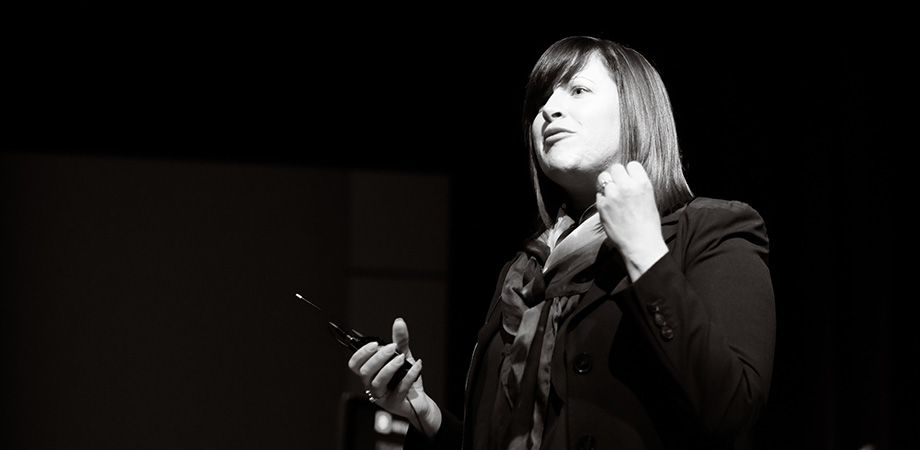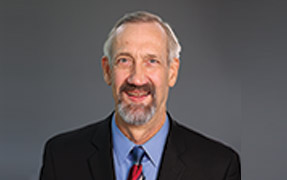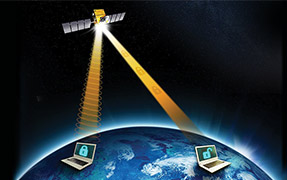#FacesofPhotonics: Senior Program Manager at Ball Aerospace, Allison Barto

"'Where did we come from?' and 'Are we alone?' are two of the most fundamental questions humans have been asking throughout history. I get to be involved in supporting astrophysics research at a time when we have the technology to take meaningful steps toward answering those questions."
Allison Barto is a force to be reckoned with in the astrophysics community — she graduated with a Bachelor of Science in Physics and has worked at Ball Aerospace for twenty-one years. Currently, she is the Senior Program Manager for both the James Webb Space Telescope (JWST) and the Large Synoptic Survey Telescope, Camera Optics.
"The James Webb Space Telescope will be able to observe the first generation of luminous objects after the Big Bang," she says, "and detect possible signatures of life in the atmospheres of extra-solar planets."
Allison has also been an active member of the SPIE community for many years, including being Symposium Chair for SPIE Astronomical Telescopes + Instrumentation and Conference Chair and Committee Member at SPIE Optics + Photonics. In August 2019, Allison and Johnathan Arenberg of Northrop Grumman Aerospace Systems presented an open letter to future flagship designers at Optics + Photonics. It "conveys the main lessons learned by the authors from their tenures on Chandra, JWST, and the current studies of decadal missions."
Enjoy the SPIE Faces of Photonics interview with Allison!

ASTRO AUDIENCE: Allison addresses the crowd as Symposium Chair at Astronomical Telescopes + Instrumentation 2018 in Austin, Texas.
1. Tell us about when you first became interested in optics and photonics.
The summer I was 10 or 11, my parents and I were camping in Mt. Rainier National Park, as we often did. One beautifully clear night (not a frequent occurrence in Washington State), the ranger giving the evening interpretive program, Jim Ross, decided to give a star talk after the regular program.
We all got in our cars and snaked our way up the mountain to lay on the cement of an empty parking lot. Jim pointed out both the constellations, with their wonderful stories of the antics of the Greek gods, as well as the science and nature of the celestial bodies we could see in that dark sky site.
The next day, I decided I wanted to study astrophysics when I got to college. A couple years later my parents bought me my first telescope and I joined the local amateur astronomy community. Every summer my dad and I would attend the Table Mountain Star Party, where hundreds of people gathered on a mountain top for a weekend. I remember looking at Neptune through a 32" Dobsonian telescope whose owner had ground the primary mirror himself and going to a lecture on how to construct a cooling system for the first generation of ccd cameras available to amateurs.
I was still only 14, but I was getting my first taste of the connection between the science I found so fascinating and the instrumentation necessary for study and observation.

SEEING STARS: Allison shared a photograph from one of the Table Mountain Star Parties she attended with her father.
2. Describe a memorable experience from an SPIE event.
The more of the SPIE community I meet, the more I am struck by the passion and warmth of the members, the staff, and the community at large - the passion both to advance optics and photonics research and technologies as well as the passion to create a rich environment within the industry.
For the Women in Optics luncheon at the 2016 SPIE Astronomical Telescopes + Instrumentation Symposium in Edinburgh, Scotland, we brought Dame Jocelyn Bell Burnell in to talk about her experiences in the field and thoughts on gender representation within astronomy. Her talk was fascinating and the discussion at each table afterwards was incredibly rich and thoughtful.
I have enjoyed continuing to connect with this group and others involved in Diversity and Inclusion events at other SPIE symposia in recent years. The passion and eagerness to engage in rich, pragmatic discussions and the specific proposed actions that have come out of these gatherings has been inspiring and it is invigorating to see the commitment to making our community the best it can be.
3. Share your favorite outreach or volunteer story.
Sharing both the wonders of our Universe as well as the story of how we use and design optical systems to make these observations is one of my greatest joys. Working on an unprecedented and audacious program like the JWST provides a wonderful platform to share the link between the big questions about our Universe we're hoping to answer and the engineering of amazing telescopes that make those discoveries possible.
I find that people often haven't learned a lot about light during school and I really enjoy connecting how the physics of light informs telescope design. For the 25th Anniversary of the Hubble Space Telescope I organized and participated in "Hubble Day" at Mackintosh Academy in Boulder, Colorado.
We were able to organize a full day of space-science and optics related activities for the students at this small K-8 school. One young girl, I think a 1st grader, was so inspired by the day that she did her own research when she got home and came into school the next day with a whole poster about Hubble that she shared with the principal and her class.
4. Explain your current research, and how it can impact society.
Working at Ball has been an incredible opportunity. Beyond the amazing discoveries JWST will surely make, the biggest reward has been the day-to-day work of designing, building, and testing this amazing telescope. From performing early optical trade studies back in 2002, to completing optical testing last year and now preparing for on-orbit alignment and phasing, I have been challenged daily by the tremendous task and the amazing team working on this program.
I cannot think of anything more rewarding than working with the rest of the Webb team for the past 16 years to solve the myriad of challenges that come with building such a large, complex, and precise system. This team thrives in complexity and are all-passionate about their work — it has been so much fun learning all we have while building the next great engine of astronomical discovery.

IT'S A BIRD! IT'S A PLANE! IT'S A...GALAXY?: Allison joins a class of third-graders for a day of learning about JWST.
5. Share an unexpected discovery you've made in your life, either scientific or personal.
Working on such a large, complex program makes it clear how important diversity of team members is to building a successful mission. We each bring something unique to the team — be it our particular area of expertise, how we respond to challenges, or even how we think.
In order for a large, complex program to succeed, you need it all — we need people from nearly every technical and scientific discipline plus those with backgrounds in finance, communications, and more; we need people who are driven by the details and those who see the big picture; we need people with depth of experience, and those with fresh perspectives; we need people who are great with their hands, those who are analytical, and those who observe and notice the connections and interdependencies of the various aspects of the system.
We like to tell kids that they can do and be anything, but we're not good at helping them discover how to pursue their passions in a way that stays true to who they are, how they think, and the particular gifts they bring.
It is not necessarily intellectual potential as much as personality that might make an individual better suited to one discipline over another. I think we can do better at helping students know themselves and finding the best ways to use their personal strengths to advance the field they find most compelling.
6. What are you most excited to see in the future development of photonics?
We are at such an exciting time for astrophysics research with the construction of multiple telescopes dozens of meters in diameter on the ground and the first segmented-aperture space telescope due to launch in two years. The "holy grail" of finding other life in the Universe, something that wasn't considered either possible or likely as recently as 25 years ago, is now within our grasp.
We have much of the fundamental technology needed to take the next steps to design systems capable of finding a statistically relevant number of "exo-earths" and we have shown it is possible to build large, complex observatories for both ground and space. I think this quest to find evidence of life outside our solar system is a great unifying mission that both the scientific community and the public at large can rally around to gain support to build the next generation of telescopes necessary to answer this question.

DISCOVER YOUR PASSION: Allison does astronomy activities with students at a Girls In Science event at Mackintosh Academy in Colorado.
7. What is your advice for others in the STEM community?
I think we, as a STEM community, have two fundamental responsibilities beyond our own research or contributions to our industries: 1) creating a passionate next generation of STEM professionals and 2) helping to de-mystify STEM and generally increase scientific literacy in our society.
In your outreach to help inspire the next generation to pursue STEM fields, I think it is important to consider access points. I know people who didn't considered themselves "STEM" people and who never would have sought out extra-curricular robotics, design, or science opportunities when they were young. But because their first exposure to programming was through the access point of creative writing, they realized a passion for coding and are computer scientists today.
We need to do everything we can to help provide a myriad of access points to the most people possible — not just those who think they're interested — because you never know when or how that spark of interest might ignite. Not everyone we outreach to will go on to get a degree in a STEM field, but everyone can come away with a better understanding of how science is done. Basic scientific literacy helps the general public better ascertain well-supported science from pseudo-science and promotes using a critical eye and seeking more data when making decisions that can impact our society and our planet.
Fundamentally, we advance our fields by careful, studied research and thinking critically and logically to make hypotheses and progress our understanding. This is something everyone is capable of doing and understanding. During outreach, it is more important to help people confidently understand your thought process or the logical steps that you followed, than to dazzle and intimidate with overly-complex explanations.
One of the best comments is, "I get it — that makes complete sense!" It is up to us to help everyone realize they, too, think like a scientist and realize that scientific understanding comes from careful and controlled work and not magical guesses.
| Enjoy this article? Get similar news in your inbox |
|



